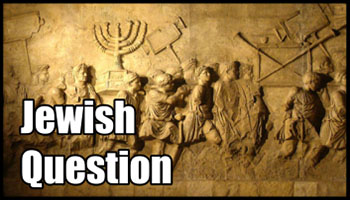Description
Centenary Edition. With Prefaces by Henry Fairfield Osborn, Research Professor of Zoology, Columbia University. First published in 1916, this work established Grant as an authority in racial thought. Its success laid the groundwork for the emerging science of eugenics, and was widely read by US presidents, scientists and became a popular best-seller in its day.
It is also widely credited with creating the 1924 Immigration Act, which restricted immigration to the U.S. to those of its original founding population nations of north-western Europe—a policy which was only reversed by the 1964 amendment.
“The Passing of the Great Race was designed by the author to rouse his fellow-Americans to the overwhelming importance of race and to the folly of the “Melting Pot” theory . . . The days of the Civil War and the provincial sentimentalism which governed or misgoverned our public opinion are past, and this generation must completely repudiate the proud boast of our fathers that they acknowledged no distinction in “race, creed, or color,” or else the native American must turn the page of history and write: FINIS AMERICA —from the introduction to the fourth edition.
The book is a sweeping and classic study of racial anthropology and history which starts with a complete explanation of the term “race,” and its practical meaning. It then studies Nordic European racial history from the earliest times to the present day, concluding that Third World immigration would destroy Europe and America.
It was a call to American whites to counter the dangers both from non-white and non-North Western European immigration.
Unashamedly Nordicist in outlook, Grant used history and anthropology to argue against an open-door immigration policy, which, he said, would lead to the destruction of the founding American population.
“We Americans must realize that the altruistic ideals which have controlled our social development during the past century . . . are sweeping the nation toward a racial abyss. If the Melting Pot is allowed to boil without control, the type of native American of Colonial descent will become as extinct as the Athenian of the age of Pericles, and the Viking of the days of Rollo.”
This special Centenary Edition contains the complete original text, tables and maps, along with the author’s extra map explanations which he added to the 1936 fourth edition.
In addition, it also contains the author’s introductions to the first and fourth editions, and the accompanying introductions by Professor Henry Fairfield Osborn.
Fully indexed.
About the author: Madison Grant (1865–1937) was an American lawyer known primarily for his work as a eugenicist and conservationist. He served as the vice president of the Immigration Restriction League from 1922 onwards, and as an expert on world racial data, Grant also provided statistics for the Immigration Act of 1924 to set the quotas on immigrants from certain European countries. He also assisted in the passing and prosecution of several anti-miscegenation laws, notably the Racial Integrity Act of 1924 in the state of Virginia.
As a conservationist, Grant is credited with saving many natural species from extinction, and co-founded the Save-the-Redwoods League, developing the first deer hunting laws in New York (which spread to other states), the creator of wildlife management, co-founded the Bronx Zoo, build the Bronx River Parkway, an organizer of the American Bison Society, helped to create the Glacier National Park and Denali National Park. He served on the board trustees at the American Museum of Natural History, was a director of the American Eugenics Society, vice president of the Immigration Restriction League, a founding member of the Galton Society, and one of the eight members of the International Committee of Eugenics. He was awarded the gold medal of the Society of Arts and Sciences in 1929.
Contents:
Preface To the First Edition
Preface To the Second Edition
Introduction To the First Edition
Introduction To the Fourth Revised Edition
Centenary Edition: Publisher’s note
Part I: Race, Language, And Nationality
I: Race and Democracy
II: The Physical Basis of Race
III: Race and Habitat
IV: The Competition of Races
V: Race, Language, And Nationality
VI: Race and Language
VII: The European Races in The Colonies
Part II: European Races in History
I: Eolithic Man
II: Paleolithic Man
III: The Neolithic and Bronze Ages
IV: The Alpine Race
V: The Mediterranean Race
VI: The Nordic Race
VII: Teutonic Europe
VIII: The Expansion of The Nordics
IX: The Nordic Fatherland
X: The Nordic Race Outside of Europe
XI: The Racial Aptitudes
XII: Arya
XIII: The Origin of The Aryan Languages
XIV: The Aryan Language in Asia
Bibliography
Maps And Explanations
Index
156 pages. Paperback



























